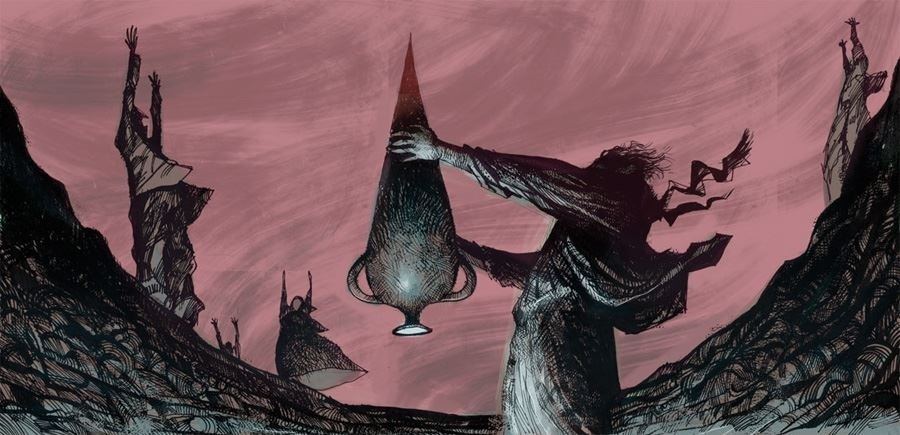
Διαβάστε την ελεύθερη πτήση στα ελληνικά εδώ.
In ancient Greece the winds were considered to be Gods - or at least demonic creatures - that, in order to be placated, demanded sacrifices of some sort. Their divine nature is described in Iliad, in the myth of Typhon and Aeolus, but also in our traditions, that have their roots in antiquity. Empedocles, around the 5th century BC taught his followers how to bind and unbind them through sacrifices. Empedocles proposed that they slaughtered donkeys and spread their skins at the top of a hill, where they would catch the winds. Wind “exorcists” that had the ability to put the wind to sleep were found in Ancient Greece in Athens and Corinth and continued to exist until the Byzantium era. The wind binding rituals were common in many islands, such as Kalymnos, Sifnos, Salamis, and Crete.
In eastern Ikaria the winds were appeased by burying them in tombs made of soil which they covered with pieces of quartz. These were known as wind graves (ανεμοτάφια - anemotaphia).
The traditional stories convey that during the old times, up, high on the mountains, the villagers would gather to “burry the wind”. Some time, two hundred years ago, a priest came by and asked them what they were doing. The villagers told him they were “burying the wind”. The priest decided to sit by and observe the ritual and listen to the magic words they were chanting. Afterwards he took all of them to the church of Saint Zachary. He informed them that “this thing you are doing the church does not approve of, and if you do it again, you will be excommunicated”. So, they stopped. But what did they do instead? “They took an ewer with an opening in the front and the oldest man of the village put it, nozzle-first, on to the ground, in a hole dug for that purpose. As soon as the ewer started “whistling”, he plugged it with his hand, and recited words that I’m not going to repeat here. Afterwards he would place the ewer into the hole and burry it. Then, all the villagers together, would gather rocks of broken up quartz and throw them over it, while murmuring curses, and other magic words, and then left. This tradition is well known around the villages of Neya, Monokampi, and Katafygi. A quite similar ritual in Titani of Korinth has been passed on to us by Pausanias. There, once a year, the priest of the temple of Goddess Athina, at the altar of the Winds, used to perform a ritual over four repositories in order to “tame the wildness of the Spirits”. (G.A. Mega “The wind burials of Ikaria”).
At Katafygi village there is an area called “Anemotafia” (i.e. wind graves) that has obviously been thus named due to the pagan ceremonies that used to take place there. Professor Katsis in 1965, tried to explore this tradition. During one of his visits he found ancient tombs that he believed related to the fact that the villagers believed the dead were to blame for the extremely strong winds striking the area and causing a great deal of damage. As a result, they went there and performed their magic spells. The, then, curator of antiquities, N. Kontoleon, performed several excavations in the area and unearthed several tombs containing burned ostraca (i.e. potsherds) and bones.
This tradition has strong roots in antiquity but got lost as the years passed and Christianity prevailed. The place names, however, survived to remind us how strongly human beings depended on natural phenomena.
Vasso Katte for ikariamag.gr








